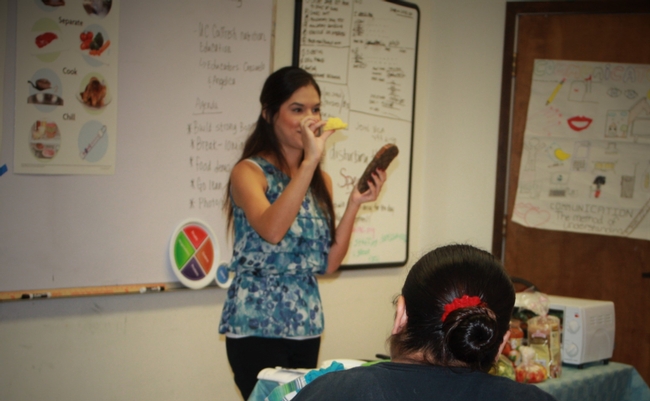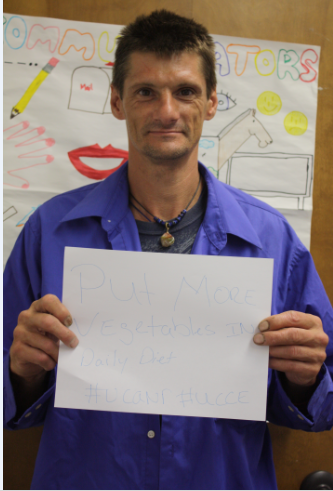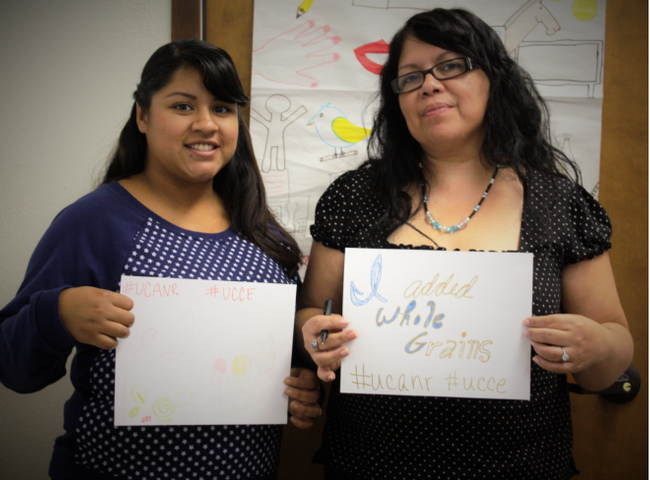
Posts Tagged: communities
Bee Biologist Lauren Ponisio: How Pyrodiversity Impacts Pollinator Communities
How does pyrodiversity impact pollinator communities? That's a crucial question, especially...
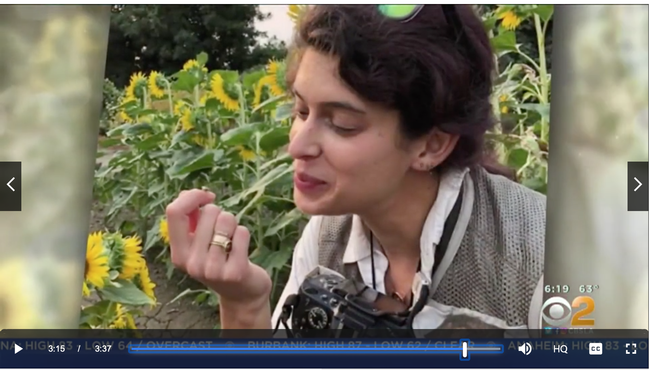
This is a screen shot of Lauren Ponisio in a CBS Los Angeles video, "Bee Biologist Can't Stop Buzzing About Her Work." CBS wrote that she "puts science, technology and math to work in her study of bees."
Allie Igwe: The Road to Success
The road to success is paved with soil microbial communities. And education, curiosity,...

UC Davis doctoral student Alexandria “Allie” Igwe has received a $138,000 National Science Foundation Postdoctoral Fellowship to work on soil microbial communities and develop novel online tools to increase interest in ecology.
What You May Not Know About Hummingbirds
Pollinators aren't just bees, butterflies, beetles and bats. They're also birds, like...

Hummingbirds eat insects and insects eat hummingbirds. Here a praying mantis lurks by a hummingbird feeder. It was quickly removed to another spot. (Photo by Kathy Keatley Garvey)

A hummingbird flies in for a quick burst of energy. It is best not to use red dye in a feeder; some companies make hummingbird feeders with red glass. (Photo by Kathy Keatley Garvey)
Fostering changes one #healthyselfie at a time
A group of participants in the UC CalFresh Nutrition Education program will graduate next week ready to use the knowledge and skills they have acquired to make healthy choices for themselves and their families. Let's find out what healthy changes they have made:
“I added whole grains.”
“Put more vegetables in daily diet.”
“Serving more fruits and veggies.”
“Eating more greens and less fatty foods.”
“Eating more colorful vegetables.”
“Don't leave meat out!”
“Eating more vegetables and fruits.”
“Being more physically active.”
The UC CalFresh Nutrition Education program is a no-cost, evidence-based course focusing on nutrition, physical activity, food safety and resource management offered to low-income youth and adults. Community partnerships are essential for successful, sustainable programming.
The Fresno-Madera County UC CalFresh Nutrition Education Program is currently hosting an Eat Smart, Being Active class series in partnership with a local job training agency. Participants attending Proteus' Jobs 2000 classes are offered nutrition education as part of their ongoing education, job training and job placement services. UC CalFresh maintains an ongoing partnership with Proteus Inc., enabling us to expand our reach and assist low-income families to make informed and educated decisions when it comes to their health.
The current class has covered topics including:
- Incorporating a variety of fruits and vegetables, whole grains and lean proteins into meals and snacks.
- The importance of physical activity, and the health benefits one derives from maintaining a healthy diet alongside an active lifestyle.
- Resource management, to encourage participants to stretch food dollars while making the healthiest food choices.
- The importance of dairy foods and calcium for bone health.
As a nutrition educator, I always encourage participants to make healthy lifestyle changes, regardless of how incrementally it's done. Whether it means walking around the block during lunch or breaks, or adding more fruits and vegetables to everyday meals, no change is too small. Health changes made gradually enable us to maintain them over time.
Below are a few tips I like to provide series participants:
- Start with a goal that is achievable and time bound.
- As you achieve your health goals, challenge yourself further. For example, you may be accustomed to drinking whole milk and have effectively transitioned to reduced-fat milk (2%). Don't stop there, challenge yourself and go for low-fat (1%) milk.
- Write down your health goal, this will keep you accountable.
- Your health goal should be fun and enjoyable, involve your family or friends to make it social. For example, create a neighborhood walking club and encourage others in your community to be more active.
- Celebrate your successes!
- For more tips, I encourage participants to visit choosemyplate.gov. There are always new resources available to make a healthy lifestyle easier.
Lifestyle changes happen gradually, and Jobs 2000 participants are leading the way toward building healthier families, while encouraging others to do so too. Together we can inspire others to make healthy changes!
I want to encourage you to take a #healthyselfie to inspire others within your community to make healthy lifestyle changes.
Use the hashtags #UCCE and #healthyselfie, and follow @UCCalFreshFC and @UCANR to stay connected with our social media platforms, for more healthy tips, and for updates about events and classes in the Central Valley. You can join and stay connected to the work being done in Fresno and Madera counties across many platforms including: Facebook, Twitter, Instagram, YouTube, and our Blog.

Pictured above are (clockwise, from upper left) Brenda, Cheyenne and Mercedes who showcase their #healthyselfie with goals for food safety, eating more leafy greens and being more physically active.
UC initiative to help youth improve health, education and science literacy

Original research and literature reviews on these subjects appear in the January-March 2013 California Agriculture, UC’s peer-reviewed research journal of research in agriculture, natural and human resources (http://www.californiaagriculture.ucanr.edu).
UC Agriculture and Natural Resources (ANR) has launched a strategic initiative to help California youth. Called Healthy Families and Communities, it includes research and programs to encourage healthy lifestyles, boost science literacy, and foster positive youth development. Delaine Eastin, former State Superintendent of Public Instruction, notes, “At the end of the day, the Healthy Families and Communities Strategic Initiative is about change, scientifically measurable change, yielding concrete evidence of youth improvement due to these efforts.”
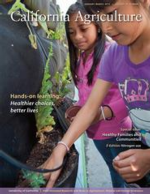
In addition, each year about 100,000 California youth who reach graduation age fail to graduate from high school, a predictor of their future social and financial difficulties as well as a missed opportunity for training skilled workers to replace those close to retirement. Finally, California’s eighth-grade science scores ranked 47th among the states in the National Assessment of Educational Progress’s 2011 report. A workforce with the knowledge and skills for scientific careers is critical to the state’s economy, and to full participation in today’s technological society.
Confronting these complex issues requires a multifaceted approach that leads to strategic change, says David Campbell, UC Cooperative Extension specialist in the Department of Human and Community Development at UC Davis and leader of ANR’s new youth-focused initiative.
“We’re bringing a lot of people together across disciplines,” he says. “If our work is going to be relevant to the real world, we need to reflect its complexity.”
As part of the initiative, UC researchers are partnering with schools and youth organizations in controlled studies to learn what works in the real world.
Summaries of projects and links to articles:
Integrating local agriculture into nutrition programs can benefit children's health (page 30). Sheri Zidenberg-Cherr, UCCE specialist in the Department of Nutrition at UC Davis, leads a K-6 nutrition education effort, called Shaping Healthy Choices. Designed to both improve child health and support local agriculture, the program incorporates serving regional fruits and vegetables, a school garden, and classroom nutrition and physical fitness lessons. In this controlled four-year study, investigators have matched schools in Northern and Central California, and will compare those that are implementing the program with those that are not.
Communitywide strategies key to preventing childhood obesity (page 13). According to Pat Crawford, UCCE specialist in the Department of Nutritional Science and Toxicology at UC Berkeley, increasing consumption of fruits and vegetables is important but not enough by itself to combat obesity. Two of the strongest factors driving obesity are sweetened beverages and fast food, and decreasing their consumption is just as important as increasing the consumption of healthy foods. “You have to do both,” she says.
Her team at the Center for Weight and Health in Berkeley, with funding from ANR, is evaluating Team Up for Good Health, a community-based approach to preventing obesity in elementary school children. Investigators are studying fourth- and fifth-grade participants in school and after-school obesity prevention programs, using body mass index (BMI) reductions after two years as a measure of success.
Lessons of Fresh Start can guide schools seeking to boost student fruit consumption (page 21). In 2005, California became the first state to address the availability of fresh and local produce in the federal School Breakfast Program through state funding. This evaluation of the California Fresh Start program reveals lessons that are especially important now, as schools across the country prepare to increase the number of fruits and vegetables offered in the School Breakfast Program by July 2014 as part of the Healthy, Hunger-Free Kids Act.
Inquiry-based learning (pages 47 and 54). Another innovative aspect of these UC programs is the curriculum. Based upon inquiry-based learning, it captures the attention of students by focusing on the real world and children’s day-to-day lives. For example, in the Shaping Healthy Choices program (page 30), a lesson on food labels at school will be followed by students comparing food labels on their own, at home and in grocery stores. “Application is what makes learning stick,” says Martin Smith, UCCE specialist in the School of Veterinary Medicine who works on youth science literacy. “Inquiry-based learning takes longer, but it’s deeper — kids own the knowledge because they figured it out themselves.”
Positive youth development merits state investment (page 38). A team of UC researchers reviews studies supporting a new paradigm for youth programs, and proposes increased state investment in this area. Research over the last 30 years has shifted thinking away from the deficit model, in which researchers and practitioners considered high-risk youth behaviors to be their focus, and toward promotion of positive patterns. “Far too many California youth are not thriving,” the authors note. “Promotion of healthy pathways to college, work and community engagement is of urgent concern.” They cite findings that positive youth development is linked to improved school achievement, higher graduation rates, and fewer risk behaviors.
The entire January-March 2013 issue can be downloaded at http://californiaagriculture.ucanr.edu.
California Agriculture is the University of California’s peer-reviewed journal of research in agricultural, human and natural resources. For a free subscription, go to: http://californiaagriculture.ucanr.edu, or write to calag@ucanr.edu.
WRITERS/EDITORS: To request a hard copy of the journal, e-mail crllopez@ucanr.edu.


